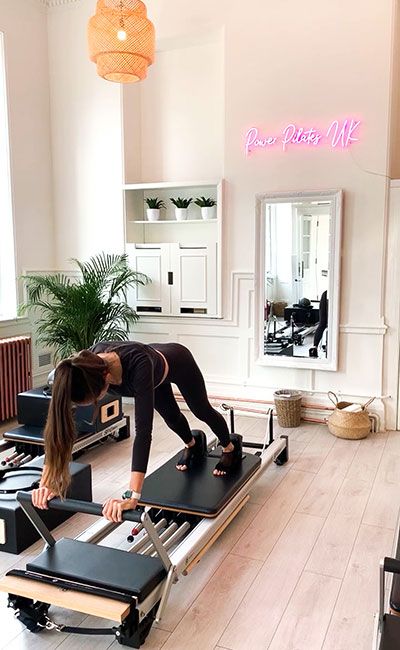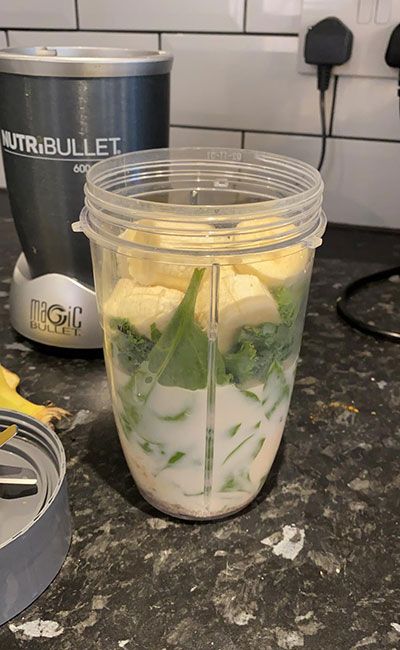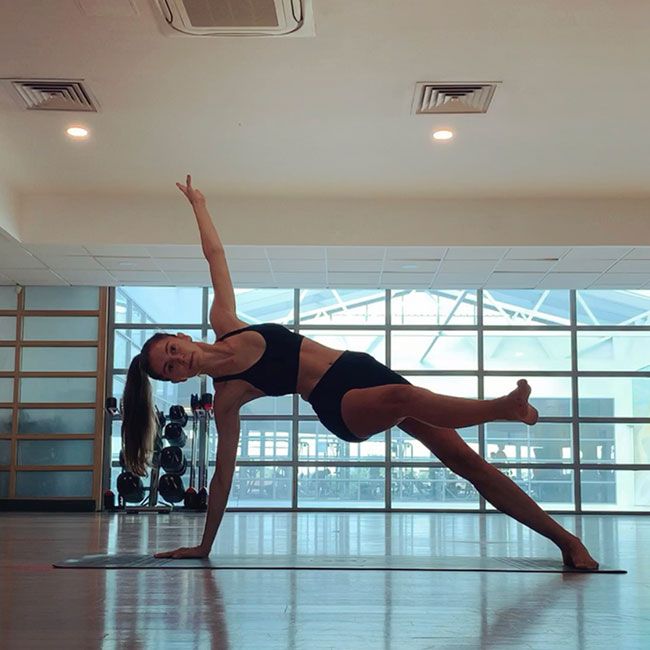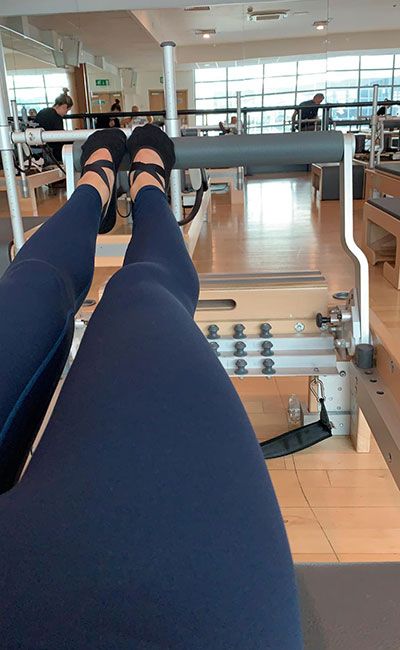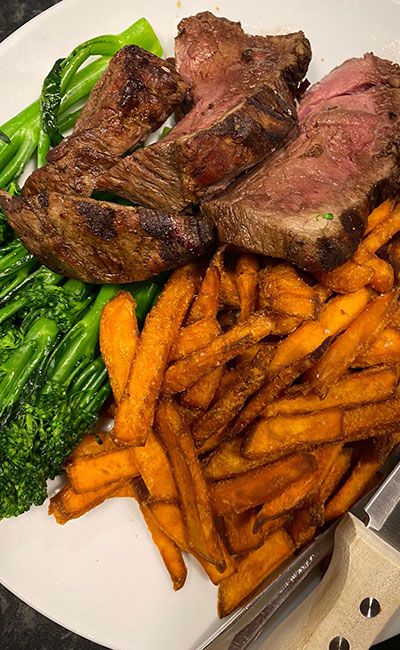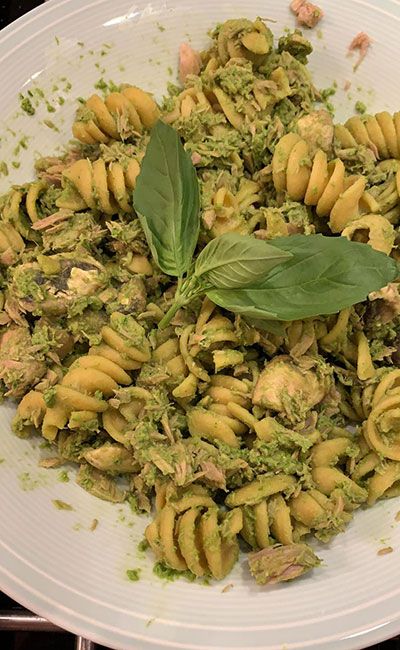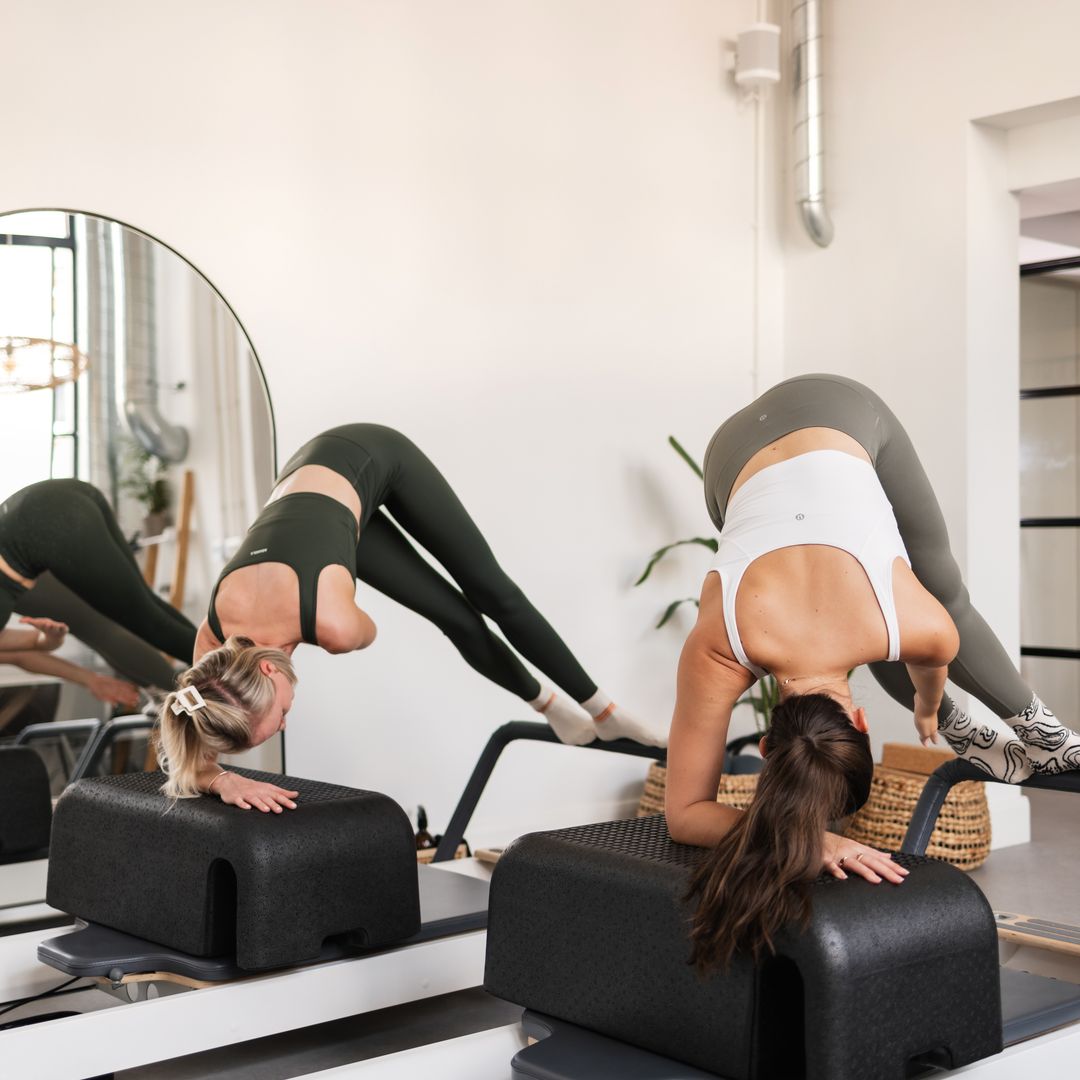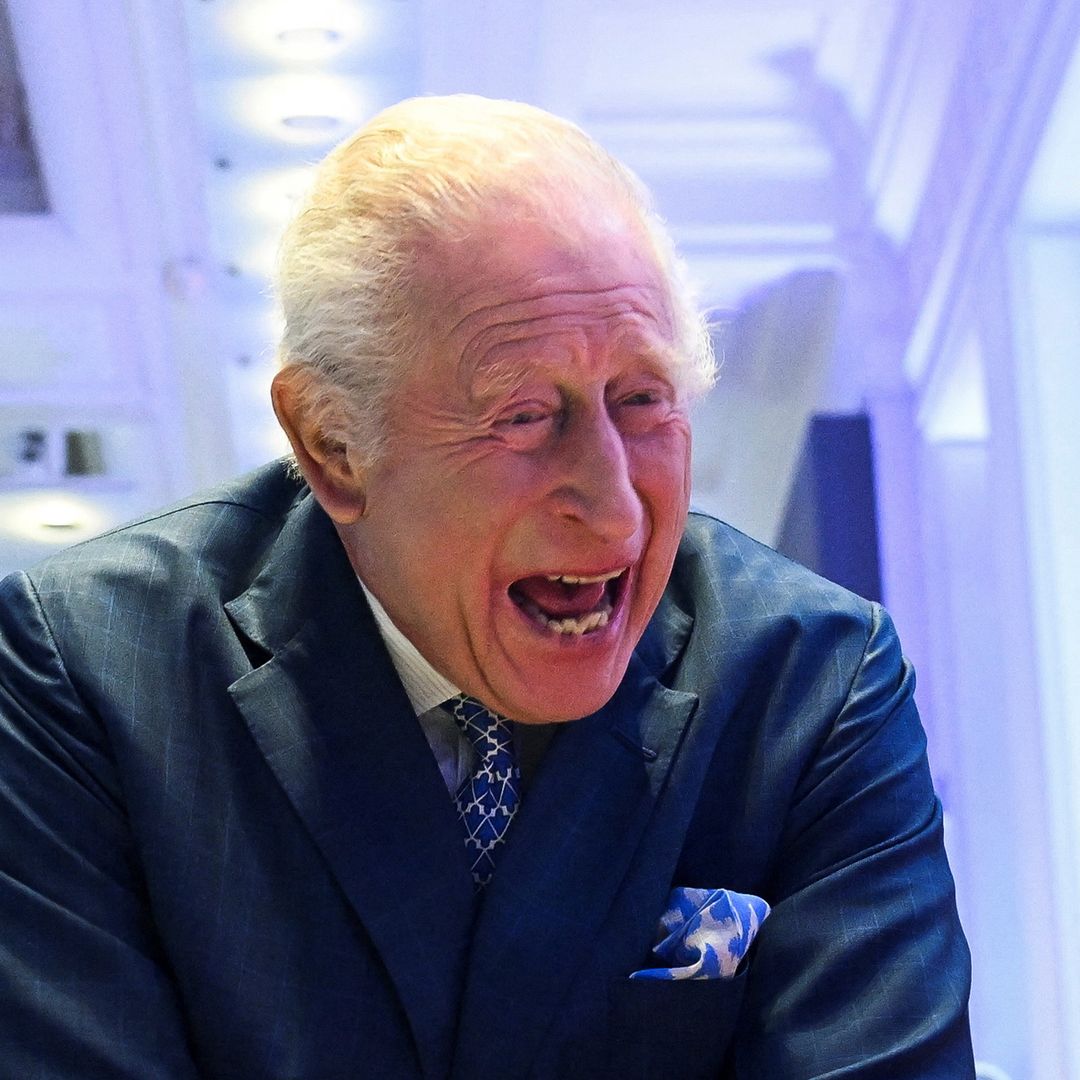Adele's tell-all chat with British Vogue has been the talk of the town since it was published last week. It was her first interview in five years, and the star dropped some big bombshells, including the fact that she works out "two or three times a day". Really.
SEE: Adele reveals she works out 'two or three times a day' as she opens up on 100lb weight loss
She explained that she ramped up her fitness regime to help with her anxiety as "it was always about becoming strong and giving myself as much time every day without my phone", but admitted that she had become "addicted". She added: "I do my weights in the morning, then I normally hike or box in the afternoon, and then I go and do my cardio at night. I was basically unemployed when I was doing it. And I do it with trainers."
WATCH: Adele makes joke about weight loss on SNL
We're all for a sustainable and balanced approach here at HELLO!, so the idea of exercising two or three times per day immediately rings alarm bells, which is why I wanted to put it to the test and prove that it's neither healthy nor feasible for the average Jane. To caveat, I recruited personal trainer and performance specialist Luke Worthington for his guidance along the way, while, as a health and fitness writer, I'm pretty well-versed in when I'm overdoing it and thus when I need to pull back. I attempted Adele's extreme exercise regime for just four days before my body could no longer cope, and I ate like a horse from start to finish.
Luke explains why it could seem a lot harder for me than Adele, and why her regime isn't necessarily advisable: "Celebrity transformations, the same as programs for professional athletes, aren’t designed to be followed by the general population, and they aren’t designed to be followed all year round.
"Athletes and performers can take periods of time where their training, nutrition and recovery is quite literally the only thing they have to consider - not factoring in issues such as a job." Think about it: while Adele could well spend the time she isn't exercising lying horizontal in front of Netflix, we can't. We need to conserve energy for other things, and Adele likely had a full team of PTs and nutritionists on hand to keep her going, too.
MORE: Adele's 7 weight loss secrets uncovered as she reveals truth behind her transformation
So without further ado, here's what happened when I tried Adele's extreme fitness regime, including the exact exercise I managed, what I ate, and the results.
Day 1: Pilates, walk, yoga
Adele is reportedly a fan of reformer Pilates
Ever the optimist, I went into day one with a target of at least 40 minutes per workout (Adele didn't specify how long she managed for each, but I thought this seemed sensible since I usually rack up an hour per average workout). I completed one hour-long reformer Pilates session – Adele has previously spoken out about her love for these classes, though they weren’t specified in her latest regime, a 40-minute walk and 40 minutes of yoga.
Naturally, the first was the easiest. I took part in the class at my favourite studio, Power Pilates in south east London, where the teachers incorporate weights to encourage strength, so I considered this a good replacement for Adele's daily weight sesh. I was as tired as usual by the end, but finished positive that I could last another two workouts.
MORE: 17 of the best wellness apps to download in 2021
The 40-minute walk was fine, too. I set off during my lunch hour and listened to a podcast and it was over before I knew it. The only difference I noticed was that I was a lot hungrier when I returned to eat, so I demolished a huge bowl of oats and a protein shake after my standard chicken, sweet potato and vegetable lunch.
I introduced a daily protein shake into my diet to aid muscle recovery
By the eve, I was struggling to muster up the energy for yoga, but I'd signed up to the class and knew I'd be penalised if I didn't go, while I was also intrigued to see what it actually felt like to do three workouts in one day. Thankfully, the class was less vinyasa and more yin (the lying down, relaxing kind, for any yoga novices), so I got through, but I definitely would have needed to give myself a pep talk if it included more sun salutations or inversions.
Day one, done. Bedtime came and I was knackered, but I strangely struggled to sleep – more on that below.
What I ate: Eggs and avocado on toast for breakfast, brazil nuts and banana as a mid-morning snack, two chicken breasts, sweet potato and vegetables for lunch, a protein shake as an afternoon snack, oats as a second afternoon snack, prawn risotto for dinner, oats for dessert (yep, I'm that girl).
What I drank: 4L of water (a non-negotiable for me).
READ: 20 best things to help you sleep: The tips, tricks & products you need to try
Day 2: weights, run, walk
I woke up on day two with more motivation than I expected. I managed a weight session in the morning (albeit with lower KGs than usual in anticipation of Struggsville later in the day), a 20-minute lunchtime run (slower than ever – again, to conserve my rapidly depleting energy), and a 40-minute walk after work. The run was by far the hardest, but I slowed to a jog and occasionally stopped to walk, but another mammoth lunch and afternoon coffee gave me a boost and the evening's walk was pretty pleasant.
It was the nighttime that I started to feel the effects. Tiredness came over me like nothing I've ever experienced before, and I felt weirdly jittery. My muscles had also begun to ache which, along with the anxious jittery feeling, meant I couldn’t sleep again.
What I ate: Eggs and avocado on toast for breakfast, brazil nuts and a bowl of oats as a mid-morning snack, two chicken breasts, sweet potato and vegetables for lunch, a protein shake as an afternoon snack, oats with a banana as a second afternoon snack, steak, sweet potato wedges and broccoli for dinner, chia pudding for dessert.
What I drank: 4L of water.
Day 3: weights, yoga
I rely on an average of nine hours sleep a night, so after two nights of roughly seven hours, and six workouts in two days, I was practically on death's door. I decided two workouts would do, but it turned out that playing with my boyfriend's nephews equates to a workout of its own, so I'm telling myself I managed three. The morning started with Adele's standard weights session (20 minutes for me), lunch was playing 'burglars' in the garden with a four-year-old for an hour, and the evening involved 20 minutes of yoga. Three changes came into full force at this point: the hunger, the aching muscles, and the weakness. I could barely lift half the weights I used to – which Luke explains further down.
READ: Adele's daily diet revealed
What I ate: Eggs and avocado on toast for breakfast, a bowl of oats as a mid-morning snack, two chicken breasts, sweet potato and vegetables for lunch, a protein shake as an afternoon snack, a banana, two squares of dark chocolate and a handful of mixed nuts as a second afternoon snack, tuna, avocado pesto (Deliciously Ella's recipe for the win) and chickpea pasta for dinner, oats for dessert.
What I drank: 4L of water.
Day three involved 20 minutes of yoga
Day 4: weights, Pilates
Come day four, I was utterly exhausted. I knew Adele's regime would be hard, but I genuinely thought I'd last at least a week. I began the day with the intention of three workouts (weights first, Pilates at lunch and yoga to finish). My weights struggle was on par with that of day three – I couldn't lift much at all – and my shoulders and core were quivering like there was no tomorrow during Pilates, but I still believed I'd be capable of yoga by 6pm. Let me tell you, I was not.
As I clocked off work for the day at 5pm, all I could think about was food and sleep. The idea of yoga filled me with dread, which, as a part-time yoga teacher, isn't something I've ever felt. I could also feel a recurring injury in my groin playing up, so I knew it was time to stop. I spent the evening eating, opening the fridge, staring into the fridge, eating, opening the fridge, staring into the fridge, eating, and repeating. My sleep still suffered, however, but after two days' rest it was back to its non-broken blissful norm.
What I ate: Eggs and avocado on toast for breakfast, a bowl of oats as a mid-morning snack, two chicken breasts, sweet potato and vegetables for lunch, a protein shake as an afternoon snack, a banana and two pieces of toast with almond butter as a second afternoon snack, sea bass, rice and vegetables for dinner, oats and an apple with peanut butter for dessert.
What I drank: 4L of water.
I replaced Adele's weight lifting session with a Pilates class
Here's everything I learned, with explanations from Luke.
1. Food is fuel
I ate considerably more to compensate for calories burnt
I don’t think I would have survived (dramatic? Me?) if I hadn't eaten more to compensate for all the calories burnt during exercise. Luke explains: "When we start an exercise program, or increase the volume or intensity of the program we are on - then we will be burning more energy throughout the day (which is of course one of the main reasons for starting one!). If we are bringing more energy - this will trigger hunger cues to replace it."
I included a source of protein in every meal (pictured: tuna and chickpea pasta)
I also consciously upped the protein I ate to help with muscle repair, including a daily vegan protein shake (I'm dairy intolerant), and a combination of fish and meat.
2. DOMs (delayed onset muscle soreness) are deadly
My muscle aches were horrific after days one and two, but seemed to subside after day three. Luke says this is a normal response to an intense exercise regime: "DOMS is a phenomenon that affects us when we see sudden increases in our exercise habits," he explains. "Or when we introduce very new movement patterns. Typically DOMs peak 24 hours post exercise and subside over the next 24-48."
MORE: Louise Redknapp's PT Bradley Simmonds unveils the ultimate workout
3. Overtraining can be seriously detrimental to sleep
I almost immediately began to experience broken sleep, which is totally out of the ordinary for me. I felt jittery and on edge. "Intensive exercise is stressful to the body, but also to the nervous system," Luke says. "Releasing a cascade of hormones known as catecholamines (stress hormones). Whilst these hormones have the benefit of creating a ‘fight or flight’ response during stressful situations, they’re not great for sleep!"
4. Overtraining could negate strength gains
I switched heavy weights for light resistance bands as fatigue set in
I'm always working on lifting heavier, but after two days of working out so often, I felt like I had to reduce the amount of weight I was working with. Luke says this comes down to immediate fatigue: "Lifting weights will build strength, and so the sessions will start to feel easier - however - this is a gradual process and takes several weeks to occur. Over a short period, such as one week, we are seeing fatigue build up which will make sessions feel harder. You’re not getting weaker as such, just tired."
5. I didn't see much of an aesthetic change
Granted, I only did four days of Adele's regime, but aesthetically, I only saw the slightest change in my arms, which Luke says is temporary anyway. "It is unlikely that you have specifically lost body fat in this area within a week. However, weight training creates a short-term effect of making some areas appear more toned. This is the residual effect of blood and other fluids being concentrated to the area as it’s working (known colloquially as ‘the pump’). This subsides over 24-36 hours, but it can appear more pronounced in areas that are more lean such as the upper arm. We actually use this technique to our advantage a lot, preparing people for photo or film shoots when there are areas we specifically want to enhance or hide!"
The upshot? While working out might work wonders for Adele (both mentally and, apparently, physically), it’s not good for everyone. Like most things, it comes down to your individual case – if, like Adele, you have a flexible schedule and endless professional support, working out so frequently could well do good things, but for people going it alone with a standard job (and budget), it's almost certainly not safe, or the key to success.
Like this story? Sign up to our newsletter to get other stories like this delivered straight to your inbox.


